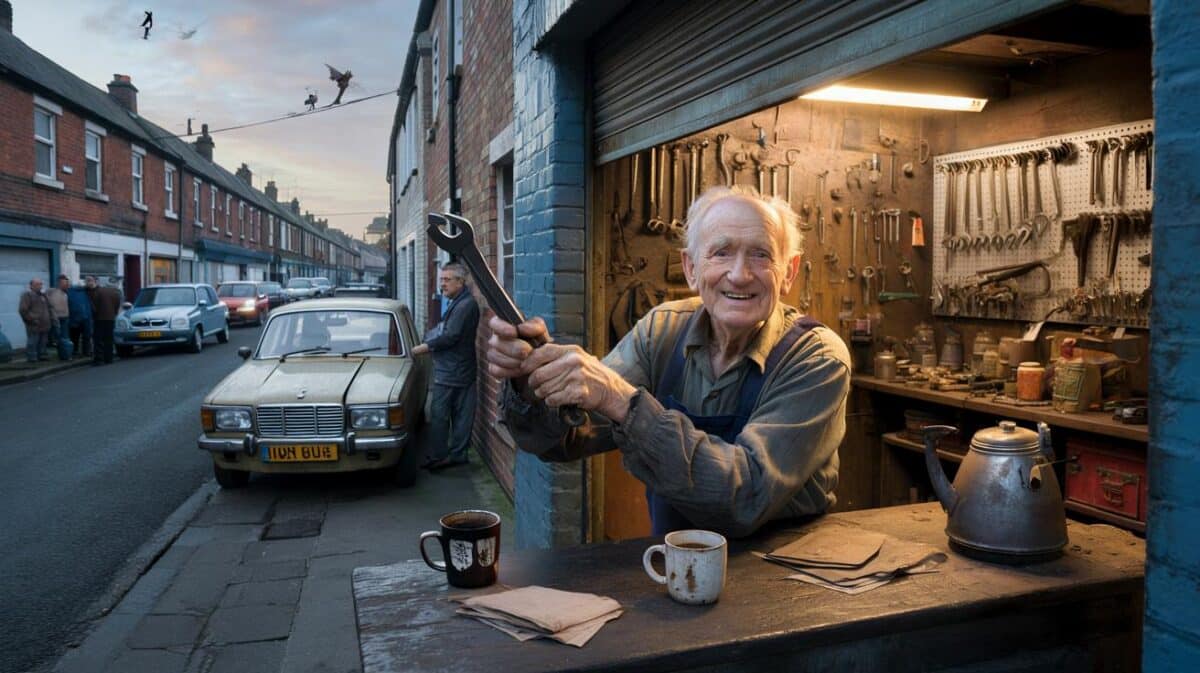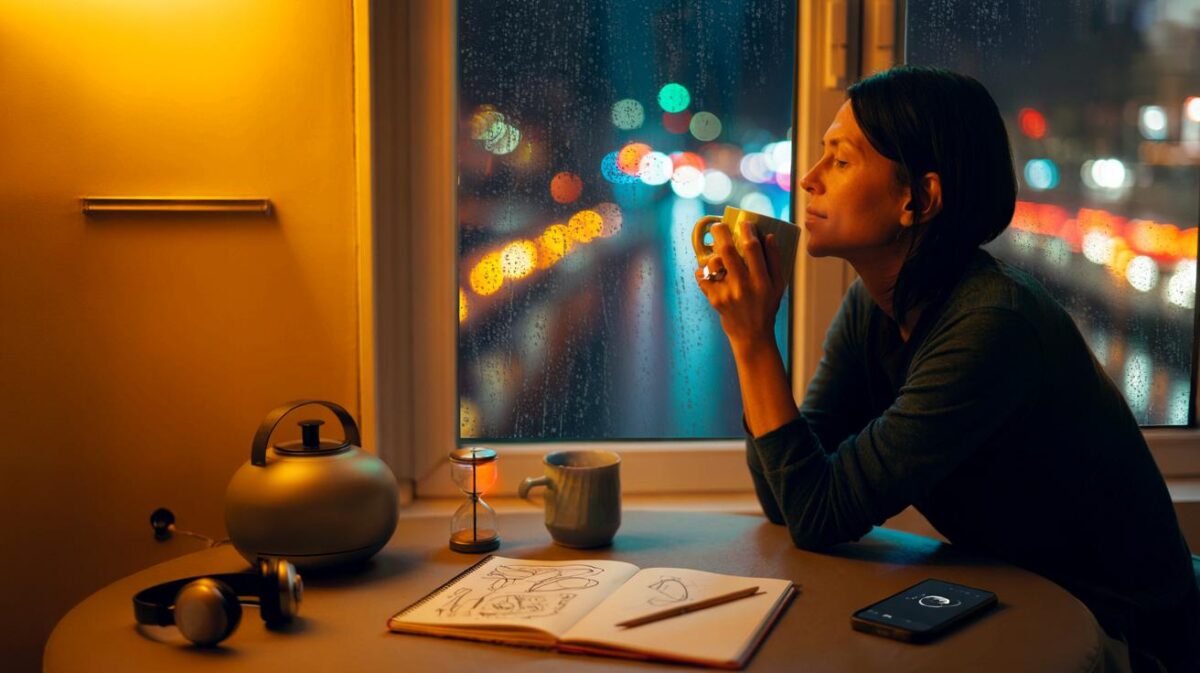You want something quick, cheap, and kind to the wood you paid good money for. There’s a humble fix sitting in most British cupboards that does exactly that.
It was a Tuesday, the kind that begins with a cold cup of tea and a long to-do list. Sunlight pushed across our old oak floor, making a neat grid of dust and paw prints I swear hadn’t been there yesterday. I’d tried the supermarket sprays — citrus this, “wood rescue” that — and every time the room ended up smelling like a car wash. My gran’s voice popped up from nowhere: brew it, don’t buy it. So I did. Three tea bags, a litre of hot water, and a microfibre mop later, the boards were clean, warm-toned, and quietly bright. **It cost me less than the price of a coffee.**
The £3 brew that makes wood glow
Here’s the simple truth: black tea brings out the best in sealed wooden floors. The tannins act like a gentle astringent, lifting light grease while deepening the wood’s warmth. No cloudy residue, no harsh odour, just an easy, even shine that looks lived-in rather than lacquered.
We’ve all had that moment when the floor looks clean but feels tacky, then every sock leaves a trail. That was Lucy, a renter in Manchester, who’d been over-mopping with fancy fluids and losing her deposit glow. She tried the tea trick before a landlord inspection — a quick pass with a scarcely damp pad, then a dry buff. The floor looked honest and well kept. The letting agent asked who she’d hired.
Why this works is more practical than mystical. Tea’s mild acidity and tannins cut through day-to-day films without biting into modern finishes. When you wring the mop nearly dry, you get the clean without the soak, which wood hates. The finish stays intact, the grain reads crisper, and the colour looks a shade richer. *No clouds of chemical scent, just the faint warmth of brewed tea.*
How to do it: the pennywise method
Pop 2–3 black tea bags (ordinary builders’ tea is perfect) into 1 litre of hot water. Steep 5–7 minutes, fish them out, and let the brew cool to lukewarm. Pour into a spray bottle or a small bucket, mist or dip lightly, then run a flat microfibre mop along the grain. Follow with a dry cloth to buff — that’s where the quiet shine wakes up.
Go light on liquid. The mop should be barely damp, not dripping. Test a small patch by a skirting board first, especially on pale maple or unsealed boards. Skip herbal or green tea — they lack the tannins that do the heavy lifting. And don’t mix in soap or vinegar; they fight each other and can leave a dull film. Let’s be honest: nobody does that every day. Aim for a quick tea-mop weekly, and spot-clean in between.
This isn’t a miracle — it’s a method. A floor restorer put it plainly to me:
“Sealed floors like small, gentle routines. You want clean and dry, not soaked and scented.”
- What you need: 2–3 black tea bags, 1 litre hot water, microfibre mop, dry cloth.
- Good for: sealed hardwood, engineered boards with a lacquer or polyurethane finish.
- Use with caution: very pale woods, raw or wax-only floors — always patch test.
- Avoid: soaking, steam mops on oiled/waxed floors, mixing in oils that can smear.
- Cost: pennies per use — a £1 box of tea bags lasts months, well under £3 overall.
Beyond the shine: keeping floors happy
Think of the tea-mop as your weekly reset, then protect the finish so you don’t need anything stronger. Dry dirt is what really wears floors — tiny bits of grit that act like sandpaper — so a quick vacuum or soft-brush sweep every few days saves you effort later. Felt pads under chairs stop those crescent scratches. Soggy bath mats and pet bowls? Move them or use trays. **The floor looked richer, not just cleaner.**
Spills are a now-not-later job. Dab, don’t rub, so you lift the liquid rather than drive it in. Sunlight will naturally mellow most floors, so rotate rugs and plants and you’ll dodge those patchwork rectangles come spring. If your boards are oiled rather than sealed, keep the tea trick extra light and finish with a dry cloth; the goal is to clean, not to strip. The trick isn’t magic; it’s restraint.
What surprised me most wasn’t the gleam. It was the way the room felt calmer with those small, matte reflections, like someone had quietly tidied the light. There’s something old-fashioned about using a brew to make floors behave, and that’s maybe why it sticks — it’s easy, repeatable, and it respects the material. **A £3 habit that gives you back the Sunday-afternoon glow, minus the plastic shine.**
There’s a certain satisfaction in a fix that doesn’t need a warning label or a plug socket. It’s almost boring, in the best way. Simple kit, gentle touch, a finish that invites bare feet instead of squeaking under shoes. If you try it, you’ll notice the silence most — just the soft scuff of a cloth and the kind of clean that doesn’t shout. Tell me how it looks in the morning light.
| Key points | Detail | Interest for the reader |
|---|---|---|
| £3 black tea hack | 2–3 tea bags in 1 litre of water, cool, barely damp mop, dry buff | Low-cost, low-effort way to revive sealed wooden floors |
| Why it works | Tannins lift light grease and warm the tone without harsh chemicals | Cleaner look and richer grain without risking the finish |
| Do’s and don’ts | Patch test, avoid soaking and steam, skip vinegar/soap mixes | Protects your floor and avoids common mistakes that dull shine |
FAQ :
- Will tea stain light or whitewashed floors?On very pale woods or raw finishes, tea can warm the tone slightly. Test a hidden corner first and go extra light, or use a plain water damp-mop instead.
- Can I use this on oiled or waxed floors?Yes, but keep moisture minimal and buff dry immediately. For heavy soil on oiled floors, use the manufacturer’s cleaner between oil top-ups.
- How often should I tea-mop?Weekly for busy rooms is plenty. In between, vacuum grit and spot-clean sticky patches with a damp cloth.
- Does green or herbal tea work the same?No. Black tea has the tannins that do the gentle cutting and warming. Herbal and green teas are too mild for this task.
- What about stubborn marks like shoe scuffs or crayon?Lift scuffs with a soft pencil eraser, then tea-mop and buff. For crayon or grease, a tiny dab of pH-neutral dish soap on a cloth, wipe, then finish with the tea and a dry buff.









